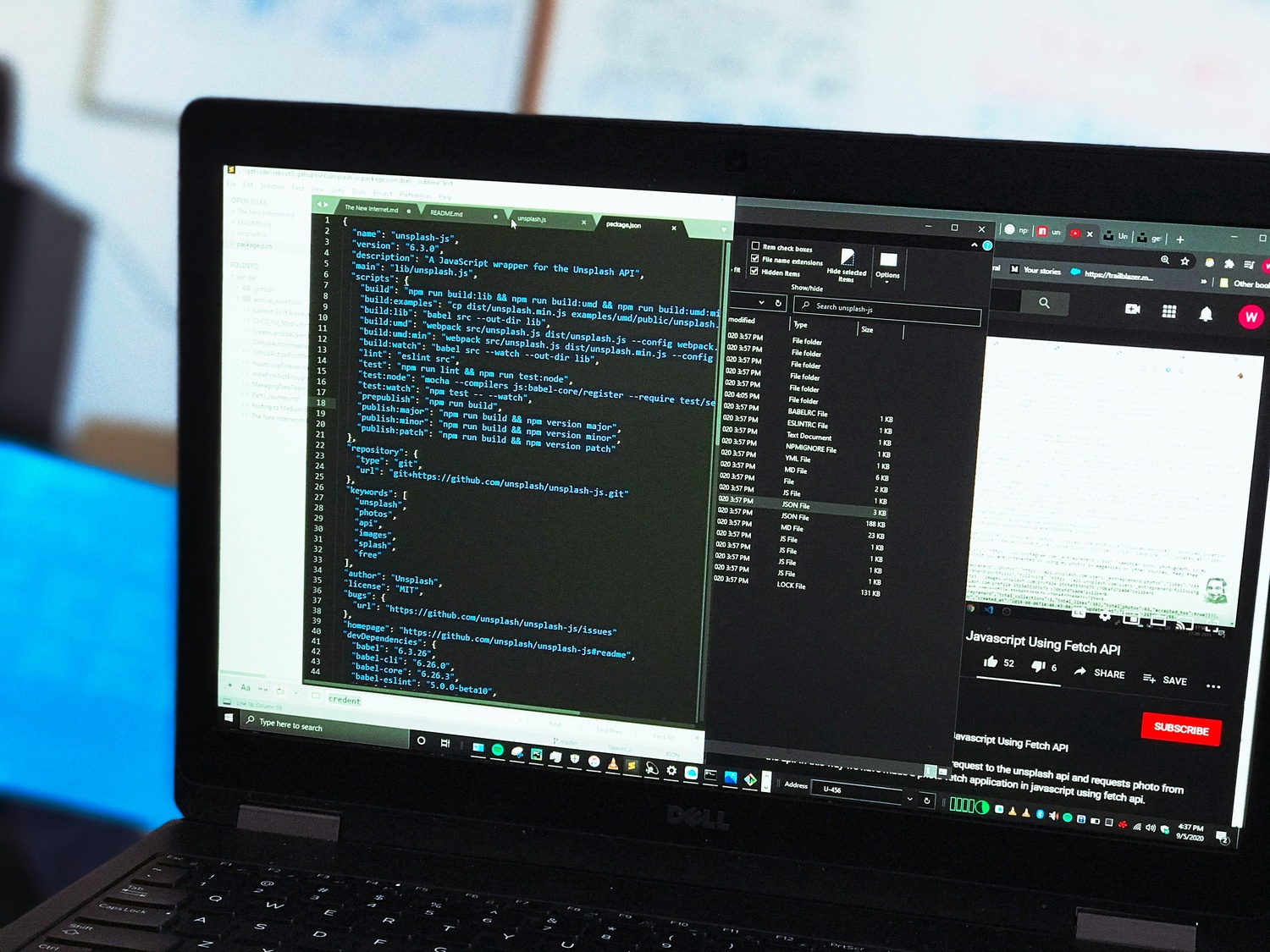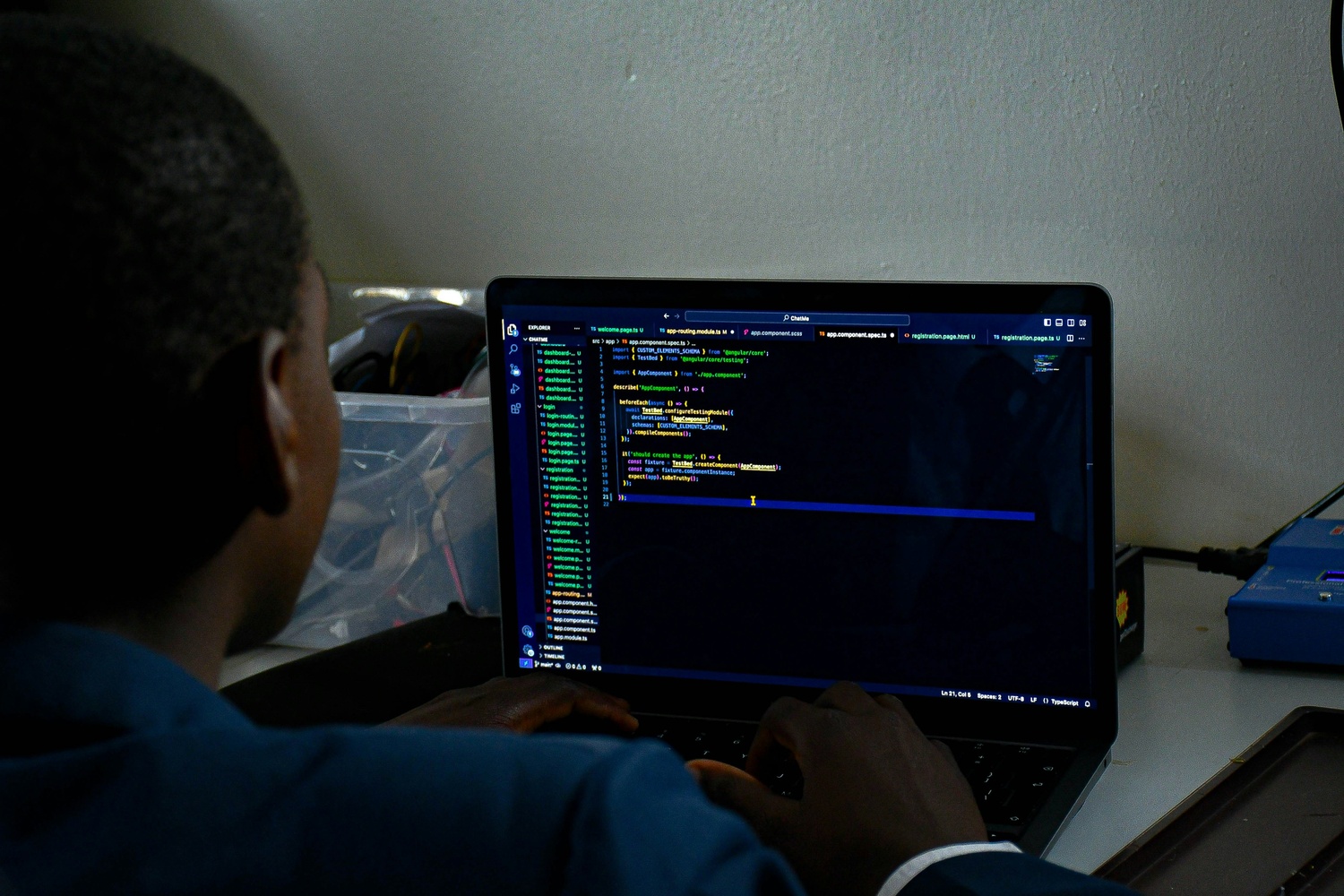Automation is the heartbeat of modern DevOps. It’s what turns long nights of manual fixes into smooth, predictable releases. But with so many tools claiming to “do it all,” figuring out which ones actually make life easier can feel like another job.
This guide cuts through the noise – highlighting the tools real teams use to automate, scale, and stay sane while shipping faster than ever.

1. AppFirst
At AppFirst, the focus is on removing the complexity that usually accompanies cloud infrastructure. The platform automates provisioning, security, and compliance across different cloud providers, allowing development teams to dedicate their time to actual product work. Instead of writing and maintaining Terraform, YAML, or custom scripts, AppFirst defines what each application needs and handles the infrastructure behind it. The idea is simple: applications first, infrastructure second.
AppFirst was built to help teams manage infrastructure without an internal DevOps function or homegrown frameworks. It provides built-in monitoring, alerting, and auditing, offering full visibility without slowing down development. Whether deployed as SaaS or self-hosted, the setup scales across teams and clouds, maintaining consistent compliance and cost management without manual oversight.
נקודות עיקריות:
- Automated provisioning of secure and compliant infrastructure
- Works across AWS, Azure, and GCP
- Built-in logging, monitoring, and alerting
- Centralized auditing and cost visibility
- SaaS or self-hosted deployment options
Who it’s best for:
- Teams without dedicated DevOps engineers
- Developers who prefer focusing on application logic over infrastructure setup
- Organizations standardizing infrastructure practices across multiple clouds
- Companies that need to maintain compliance while moving quickly
פרטי קשר:
- אֲתַר אִינטֶרנֶט: www.appfirst.dev

2. Red Hat Ansible Automation Platform
Red Hat Ansible Automation Platform provides a structured way for teams to automate repetitive DevOps tasks like configuration management, deployment, and orchestration. It helps unify workflows across different environments so developers and operations teams can use the same playbooks and logic instead of maintaining separate scripts or tools. With Ansible’s declarative approach, teams describe the desired state of their systems, and the platform ensures everything stays consistent without manual adjustments.
They focus on making automation scalable across an organization, not just for one team or project. The platform includes centralized management, role-based access, and integrations with popular CI/CD tools, making it easier to standardize how automation is handled. Whether teams are managing a few servers or hundreds of nodes, Ansible aims to keep processes predictable and infrastructure aligned with application needs.
נקודות עיקריות:
- Automates configuration, provisioning, and orchestration tasks
- Uses simple, human-readable YAML playbooks
- Centralized automation management and governance
- Integrates with popular CI/CD and cloud platforms
- Supports role-based access and reusable automation templates
Who it’s best for:
- Teams managing complex, multi-environment infrastructures
- Organizations aiming to unify automation under a single framework
- DevOps engineers looking for consistent, script-free configuration control
- Companies adopting infrastructure-as-code practices without heavy tooling
פרטי קשר:
- אתר אינטרנט: www.redhat.com
- דוא"ל: apac@redhat.com
- Facebook: www.facebook.com/RedHat
- טוויטר: x.com/RedHat
- לינקדאין: www.linkedin.com/company/red-hat
- Address: 100 E. Davie Street Raleigh, NC 27601, USA
- Phone: 8887334281
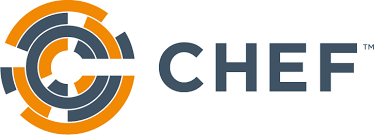
3. Chef
Chef focuses on bringing consistency and control to infrastructure automation. Their platform combines configuration management, compliance checks, and workflow orchestration into one environment that can operate across cloud and on-prem systems. Instead of relying on manual setup or ad-hoc scripts, Chef uses policy-as-code to describe how systems should look and behave, keeping configurations repeatable and predictable. This approach helps teams reduce configuration drift and maintain environments that align with defined standards.
They place strong emphasis on flexibility and scalability. Teams can automate patching, compliance audits, and deployment tasks using pre-defined templates or custom policies that fit specific workflows. The platform also supports agentless execution and integrates with major CI/CD and cloud tools, allowing organizations to orchestrate jobs across diverse environments from a single control plane. By centralizing automation, Chef helps teams simplify complex operations without adding extra overhead.
נקודות עיקריות:
- Automates configuration, compliance, and orchestration workflows
- Uses policy-as-code to define infrastructure states
- Works across cloud, hybrid, and on-prem environments
- Supports agent-based and agentless execution
- Offers pre-defined templates for recurring operational tasks
Who it’s best for:
- Teams managing both cloud and on-prem infrastructure
- Organizations needing continuous compliance and configuration consistency
- DevOps groups standardizing automation under one framework
- Enterprises aiming to coordinate diverse tools and environments through a single platform
פרטי קשר:
- Website: www.chef.io
- Facebook: www.facebook.com/getchefdotcom
- Twitter: x.com/chef
- LinkedIn: www.linkedin.com/company/chef-software
- Instagram: www.instagram.com/chef_software
- Address: 15 Wayside Rd, Suite 400 Burlington, MA 01803
- טלפון: 1-781-280-4000+
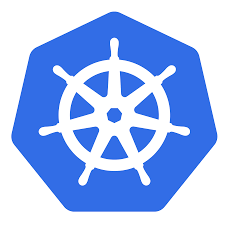
4. Kubernetes
Kubernetes, often referred to as K8s, provides an open-source way to automate the deployment, scaling, and management of containerized applications. It groups containers into logical units, allowing teams to manage complex workloads with better control and visibility. Kubernetes helps development and operations teams keep applications consistent across different environments, handling scheduling, networking, and storage without relying on manual processes. Its design makes it possible to maintain stability even as applications grow in size and complexity.
They focus on flexibility and scalability rather than locking users into one setup. Kubernetes can run in the cloud, on-premises, or in hybrid environments, letting teams move workloads freely based on their needs. Features like automated rollouts, self-healing, and load balancing make it easier to maintain uptime and reduce human intervention. Over time, Kubernetes has become a foundation for modern DevOps automation, offering a way to handle containerized systems efficiently while keeping control over deployment lifecycles.
נקודות עיקריות:
- Automates deployment, scaling, and management of containerized applications
- Supports hybrid, on-prem, and cloud environments
- Includes self-healing and auto-scaling capabilities
- Handles load balancing, storage orchestration, and configuration management
- Enables automated rollouts and rollbacks for smooth updates
Who it’s best for:
- Teams managing containerized or microservice-based applications
- Organizations needing consistent deployments across multiple environments
- DevOps teams aiming to reduce manual infrastructure management
- Companies standardizing on cloud-native architectures and workflows
פרטי קשר:
- Website: kubernetes.io
- Twitter: x.com/kubernetesio
- LinkedIn: www.linkedin.com/company/kubernetes
5. Puppet
Puppet provides a configuration management and automation framework that helps teams keep their infrastructure consistent and compliant. They focus on defining the desired state of systems, then automatically enforcing those configurations across servers, networks, and cloud environments. By doing so, teams can reduce manual intervention and maintain a stable environment as infrastructure scales or evolves. Puppet’s approach centers on predictability and governance, giving teams a way to manage complex setups through a unified automation platform.
They also make it possible to integrate automation into broader DevOps workflows without losing visibility or control. Through policy-based management, Puppet supports both operational efficiency and security requirements, especially in large or regulated environments. The system continuously checks for deviations from the desired state, applying corrections when needed, which helps minimize drift and unexpected issues. This consistency makes Puppet a practical choice for teams managing hybrid or multi-cloud infrastructures that demand reliability and compliance.
נקודות עיקריות:
- Automates configuration management and policy enforcement
- Supports hybrid, multi-cloud, and on-premises environments
- Maintains desired state and automatically corrects drift
- Provides audit trails for compliance and governance needs
- Integrates with existing DevOps toolchains for smoother workflows
Who it’s best for:
- Teams managing large or complex infrastructure across mixed environments
- Organizations with strict compliance or security standards
- DevOps groups aiming to standardize configuration and reduce manual tasks
- Enterprises focusing on maintaining consistent and predictable infrastructure operations
פרטי קשר:
- Website: www.puppet.com
- E-mail: sales-request@perforce.com
- Address: 400 First Avenue North #400 Minneapolis, MN 55401
- Phone: +1 612.517.2100
6. Docker
Docker provides a platform for developing, shipping, and running applications in containers. They allow teams to isolate applications and their dependencies into lightweight, portable units that can run consistently across environments. This approach helps eliminate the “it works on my machine” issue and makes deployments more predictable. Docker simplifies how developers build and test software by offering a standardized way to package code, libraries, and system tools together.
In a DevOps setup, Docker plays an important role in automation and scalability. It integrates easily with CI/CD pipelines, making it possible to automate the build, test, and deployment process. Teams can version control their containers, reuse components, and roll out updates with less risk. Docker also provides tools like Docker Hub and Docker Desktop to manage images, collaborate on configurations, and maintain security through verified content and compliance frameworks.
נקודות עיקריות:
- Container-based approach for consistent app deployment
- Simplifies application packaging and dependency management
- Integrates with CI/CD workflows for automated builds and releases
- Supports local and cloud environments through Docker Desktop and Docker Hub
- Provides compliance and security features, including image scanning
Who it’s best for:
- Development teams working across different environments
- Organizations standardizing deployment processes with containers
- DevOps engineers building automated CI/CD pipelines
- Teams focusing on consistent, portable application delivery
פרטי קשר:
- Website: www.docker.com
- Facebook: www.facebook.com/docker.run
- Twitter: x.com/docker
- LinkedIn: www.linkedin.com/company/docker
- Instagram: www.instagram.com/dockerinc
- Address: 3790 El Camino Real # 1052 Palo Alto, CA 94306
- Phone: (415) 941-0376
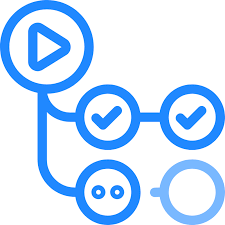
7. GitHub Actions
GitHub Actions provides an integrated way for teams to automate workflows directly within their repositories. They use it to handle everything from continuous integration and deployment to custom event-driven automation. Because Actions is built into GitHub, it reduces the need for separate tools and makes it easier to keep code, pipelines, and automation in one place. Developers can trigger workflows from almost any GitHub event, whether it’s a pull request, issue creation, or release, and customize the process using YAML-based configuration files.
The platform supports a wide range of programming languages and environments, including Linux, macOS, Windows, and containers. It allows users to run builds in parallel using matrix testing, manage secrets securely, and monitor progress in real time. The Actions Marketplace extends its flexibility by offering thousands of pre-built actions that can automate repetitive steps or connect to third-party services. Overall, GitHub Actions helps teams focus more on improving code and less on managing complex CI/CD setups.
נקודות עיקריות:
- Automates CI/CD and other workflows directly from GitHub repositories
- Supports multiple languages and operating systems
- Provides hosted and self-hosted runners for flexibility
- Includes secure secret storage and easy environment management
- Offers an extensive marketplace for pre-built integrations
Who it’s best for:
- Teams already using GitHub for source control
- Developers building CI/CD pipelines with minimal setup overhead
- Organizations aiming to simplify workflow automation within one platform
- Open-source maintainers managing contributions and releases efficiently
פרטי קשר:
- Website: github.com
- Twitter: x.com/github
- LinkedIn: www.linkedin.com/company/github
- Instagram: www.instagram.com/github
8. Jenkins
Jenkins is an open-source automation server that helps teams manage continuous integration and continuous delivery (CI/CD) processes. It provides a flexible framework for building, testing, and deploying applications, offering hundreds of plugins that integrate with various tools across the development pipeline. Teams can automate repetitive tasks, streamline code changes, and maintain consistency across environments. Because Jenkins runs on Java, it works across multiple platforms including Windows, macOS, and Linux, making it suitable for diverse infrastructure setups.
Its plugin-based structure allows users to extend functionality as needed, adapting Jenkins to both simple and complex workflows. It can distribute workloads across multiple machines, helping teams improve performance and speed up testing or deployment processes. With its web interface, they can easily configure pipelines, monitor progress, and troubleshoot issues in real time. While Jenkins requires some setup and maintenance, its flexibility and large community support make it a reliable choice for organizations looking to standardize and automate their development lifecycle.
נקודות עיקריות:
- Open-source automation server supporting CI/CD workflows
- Plugin-based architecture for extensive integration options
- Cross-platform compatibility with Windows, macOS, and Linux
- Supports distributed builds for scalability and faster processing
- Web interface with real-time feedback and configuration options
Who it’s best for:
- Development teams managing automated build and test pipelines
- Organizations standardizing CI/CD processes across projects
- Engineers needing customizable and extensible automation tools
- Teams running workloads across multiple platforms or environments
פרטי קשר:
- Website: www.jenkins.io
- Twitter: x.com/jenkinsci
- LinkedIn: www.linkedin.com/company/jenkins-project

9. Dynatrace
Dynatrace provides an observability and automation platform designed to help DevOps teams monitor applications, infrastructure, and digital experiences in one unified environment. Its main focus is on connecting data across systems and using AI-driven insights to identify performance issues, detect anomalies, and optimize operations in real time. By combining metrics, logs, traces, and user experience data, it allows teams to see how their software behaves across complex, distributed systems. This level of context helps them act faster and reduce manual troubleshooting work.
They use built-in automation to handle repetitive tasks and streamline operational workflows. Dynatrace integrates with major cloud providers, containers, and CI/CD tools, making it adaptable for hybrid and multi-cloud environments. Its AI engine analyzes large volumes of telemetry data, helping teams not only react to incidents but also predict potential issues before they affect users. Overall, it serves as a central hub for monitoring, diagnosing, and improving the reliability of software delivery pipelines.
נקודות עיקריות:
- Unified observability across applications, infrastructure, and user experiences
- AI-powered insights for faster problem detection and root cause analysis
- Automation capabilities to reduce manual operations and routine maintenance
- Integration with major cloud platforms, container systems, and DevOps tools
- Context-rich data visualization and real-time analytics
Who it’s best for:
- DevOps and SRE teams managing complex, distributed systems
- Organizations using hybrid or multi-cloud environments
- Teams needing AI-driven monitoring and automation in their workflows
- Enterprises aiming to unify observability and performance management in one platform
פרטי קשר:
- אתר אינטרנט: www.dynatrace.com
- דוא"ל: sales@dynatrace.com
- פייסבוק: www.facebook.com/Dynatrace
- טוויטר: x.com/Dynatrace
- לינקדאין: www.linkedin.com/company/dynatrace
- אינסטגרם: www.instagram.com/dynatrace
- Address: 401 Castro Street, Second Floor Mountain View, CA, 94041 United States of America
- Phone: +1.650.436.6700
10. Nagios
Nagios is an open-source monitoring system that helps teams keep track of their infrastructure, servers, networks, and applications. It works by collecting and analyzing performance data, detecting failures, and alerting administrators before issues affect critical operations. Its flexibility comes from a plugin-based architecture, which allows users to customize what they monitor and how alerts are handled. With thousands of community plugins available, it can be adapted to fit nearly any environment, from small setups to large enterprise systems.
They use Nagios to gain better visibility across their systems and reduce downtime risks. Its web interface and configuration tools make it easier to set up checks, visualize data, and manage alerts without heavy manual work. The platform supports distributed monitoring and can integrate with other DevOps tools for automation and incident response. With a long history in IT monitoring, Nagios remains a reliable option for teams who prefer a self-managed, flexible approach to infrastructure observability.
נקודות עיקריות:
- Open-source monitoring for servers, networks, and applications
- Plugin-based structure supporting extensive customization
- Real-time alerts for performance and availability issues
- Support for distributed monitoring across multiple environments
- Active global community contributing add-ons and integrations
Who it’s best for:
- DevOps teams managing hybrid or multi-server environments
- System administrators looking for a customizable open-source tool
- Organizations that prefer self-hosted monitoring solutions
- Teams needing alerting and visibility across diverse infrastructure
פרטי קשר:
- Website: www.nagios.org
- Facebook: www.facebook.com/NagiosInc
- Twitter: x.com/nagiosinc
- LinkedIn: www.linkedin.com/company/nagios-enterprises-llc
11. Prometheus
Prometheus is an open-source monitoring and alerting toolkit built for modern, cloud-native environments. They use it to collect, store, and query metrics from systems, applications, and services in real time. Its design revolves around a dimensional data model, where each time series is defined by a metric name and key-value pairs, giving teams the flexibility to organize and analyze performance data in meaningful ways. Prometheus runs independently without external dependencies, relying on local storage for simplicity and reliability.
They often combine Prometheus with visualization tools and alert managers to create a full monitoring pipeline. Its PromQL query language allows users to extract, correlate, and transform metrics for deeper insights or alerting logic. Because it integrates easily with Kubernetes and other orchestration tools, Prometheus fits well into automated DevOps workflows that demand continuous visibility and self-service monitoring. Supported by a large open-source community, it offers a straightforward way to track infrastructure and application health without unnecessary overhead.
נקודות עיקריות:
- Open-source monitoring and alerting toolkit
- Flexible dimensional data model for metric organization
- Independent operation with local storage
- PromQL for querying and transforming time series data
- Native integration with Kubernetes and other cloud environments
- Large ecosystem of official and community integrations
Who it’s best for:
- DevOps teams managing containerized or cloud-native workloads
- Organizations preferring open-source monitoring solutions
- Teams that need customizable, self-hosted observability setups
- Engineers who want fine-grained control over metrics and alerts
פרטי קשר:
- Website: prometheus.io

12. Splunk
If you’ve ever tried to make sense of endless logs or metrics coming from different systems, you probably know how chaotic it can get. That’s where Splunk steps in. It’s basically your go-to platform for collecting, organizing, and analyzing data from all over your infrastructure – whether it’s cloud-based, on-prem, or somewhere in between. Teams use Splunk to spot issues before they turn into bigger problems, track performance across applications, and keep tabs on overall system health. It brings everything into one place so you can actually see what’s happening in real time instead of guessing or chasing alerts across multiple dashboards.
Over time, Splunk has evolved into more than just a log analysis tool. Now it offers features for observability and security analytics, and it integrates smoothly with OpenTelemetry and most major cloud providers. That makes it a solid fit for modern DevOps workflows where speed, automation, and quick feedback loops matter most. In practice, a lot of teams lean on Splunk for things like alert management, performance monitoring, and incident response. It’s also great for digging into trends and visualizing data so you can connect technical insights to real business outcomes – not just graphs for the sake of graphs.
נקודות עיקריות:
- Unified platform for log management, observability, and security analytics
- Supports data collection from multiple cloud and on-premise environments
- Integrates with OpenTelemetry, SDKs, and third-party tools
- Query and visualization tools for operational insights and troubleshooting
- Enables correlation and enrichment of alerts for faster response
Who it’s best for:
- DevOps teams managing complex, multi-cloud infrastructures
- Organizations that need both observability and security data in one place
- Engineers responsible for log analysis and system performance monitoring
- Enterprises looking to automate alerting and incident management workflows
פרטי קשר:
- אתר אינטרנט: www.splunk.com
- דוא"ל: education@splunk.com
- פייסבוק: www.facebook.com/splunk
- טוויטר: x.com/splunk
- לינקדאין: www.linkedin.com/company/splunk
- אינסטגרם: www.instagram.com/splunk
- כתובת: 3098 אולסן דרייב סן חוזה, קליפורניה 95128
- טלפון: 1+415.848.8400
מַסְקָנָה
At the end of the day, DevOps automation isn’t just about cutting down on busywork anymore – it’s about giving teams room to breathe and actually focus on creating cool stuff. The tools we talked about here all help in different ways: some keep an eye on performance, others handle deployments or alerts, but together they make life a whole lot easier for anyone trying to keep systems running smoothly.
What’s nice is that there’s no single “right” setup. Some teams love open-source tools they can tweak and shape themselves, while others want something more all-in-one that just works out of the box. The real challenge is figuring out how to make all those moving pieces play nicely together. But once you do, that’s when automation really starts to click – it stops feeling like a trend or a checkbox and becomes part of how your team naturally gets things done.
